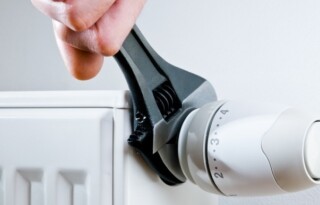Is it better to install radiators in series or in parallel? In this article we explain the difference between both installation methods and help you decide between the one-pipe system and the two-pipe system.
Installing radiators in parallel
When installing central heating, you are given the choice between a one-pipe system and a two-pipe system. The two-pipe system consists of – you’ve guessed correctly – two separate pipes: one that feeds hot water to the radiators and one that conveys used water back to the boiler. In other words, the radiators are installed in parallel. Although generally more expensive than the one-pipe system, the two-pipe system is the preferred option for modern buildings.
Two-pipe systems come in two varieties:
- Two-pipe systems with copper or plastic pipes. The pipes are attached to a collector, each radiator having a separate supply and return pipe. This type of system is by far the most common at the moment.
- Two-pipe systems with steel pipes: each radiator is separately connected to the supply pipes and the return pipes.
Vasco’s valves are perfectly suitable for both types of two-pipe systems.
How to install radiators in series
The one-pipe system was widely used in housing construction in the seventies and eighties. Connected in series, one radiator’s return water serves as supply for the next. Consequently, the last radiator in the system conveys less heat than the first. To compensate for the loss of heat, radiators must increase in size as they are farther away from the heat source. Another option is installing a bypass valve which mixes cooled return water with warm water before it is conveyed to the next radiator.
Last but not least, installing radiators in series requires pipes of adequate size! Consult a heating specialist or visit our download center to check the technical information and installation instructions.
